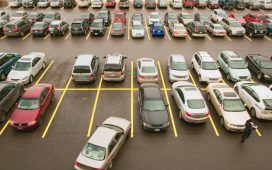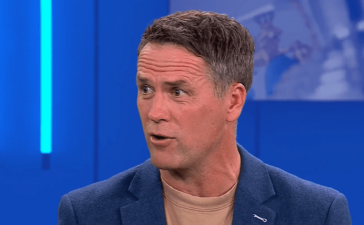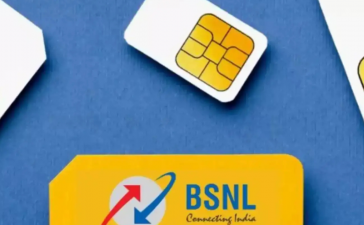As the New Year unfolds, 2024 is shaping up to be a beacon of hope for prospective car buyers. Jonathan Smoke, Chief Economist at Cox Automotive, has forecasted that this year could be the most favorable for purchasing a new vehicle since the pre-pandemic era. This optimism stems from a combination of increasing vehicle supply, reducing transaction prices, expected deals from automakers, and a potential ease in interest rates.
“With supply normalizing and the economy stabilizing to hit a soft landing and not turn into a recession, it leads to an environment that is the most normal we’ve encountered since 2019,” Smoke explained in a recent interview with the Detroit Free Press. “For consumers looking to buy a vehicle, it’s the best year by far since 2019.” This outlook is particularly noteworthy given the tumultuous market conditions experienced in the wake of COVID-19.
Recent trends in the auto industry have painted a challenging picture for buyers. In 2021 and most of 2022, new-vehicle supply plummeted to historic lows due to parts shortages, pushing transaction prices upward. This trend led to many dealers selling vehicles above the sticker price. However, this year marked a turnaround with an improvement in supply, albeit with average transaction prices still remaining high. As of November, the U.S. new-vehicle average transaction price was $48,247, a slight decrease compared to the same period in 2022, as reported by Kelley Blue Book.
Despite this, the used vehicle market continues to face inventory constraints. The average listing price for used vehicles at the beginning of December stood at $26,091, a drop from around $27,000 in December last year, based on Cox Automotive data.
The journey of purchasing a vehicle can often present unique challenges for Black individuals, rooted in systemic issues and biases that pervade various sectors, including the auto industry. A significant hurdle is the disparity in financing options and terms offered to Black customers compared to their white counterparts. Studies have shown that Black buyers are more likely to be offered higher interest rates on auto loans, even when accounting for credit scores and income levels. This discrepancy not only affects the immediate affordability of the vehicle but also has long-term financial implications, contributing to a wider wealth gap. Moreover, Black consumers often face skepticism or unequal treatment during the negotiation process, potentially leading to less favorable pricing or terms. The implicit biases of sales staff can inadvertently influence the sales interaction, resulting in a less transparent and equitable purchasing experience.
Additionally, there’s the challenge of representation and relatability in the auto industry. The underrepresentation of Black individuals in automotive sales and management positions can lead to a lack of cultural understanding and rapport, which is crucial in building trust and confidence in a major financial decision like buying a car. This lack of representation can also extend to marketing and advertising, where the needs and preferences of Black consumers might not be adequately reflected or understood. Furthermore, Black buyers often have to navigate stereotypes and prejudices that can emerge in the purchasing process. These stereotypes can lead to a heightened scrutiny of their financial capabilities or intentions, creating an unwelcoming or stressful environment. Overcoming these challenges requires not only individual resilience but also systemic changes in the industry to ensure fairness and equality in the car buying process for Black consumers.
But there is a silver lining. While prices have shown improvement, soaring interest rates have continued to challenge affordability. Smoke revealed that the average interest rate for new car loans in December was 9.5%, a significant jump from 5.2% in December 2021. However, he anticipates that by spring, interest rates will decline, and prices for both new and used cars will start to decrease, aligning with traditional tax return season.
One must wonder, has the recent United Auto Workers (UAW) strike against Detroit’s ‘Big Three’ automakers – General Motors, Ford, and Stellantis – shone a light on the potential for better buying rates in the automotive industry? This year, Detroit, the heart of America’s automotive sector, faced significant challenges due to the UAW strike, which centered around demands for fair wages, job security, and improved working conditions. This movement had a notable impact on the city’s economy and its workforce, yet it also demonstrated Detroit’s remarkable resilience. The community’s solidarity, with businesses and residents supporting the striking workers, highlighted the city’s deep connection to the auto industry. Furthermore, this strike brought national attention to workers’ rights and fair labor practices, underscoring Detroit’s influential role in industrial labor relations.
As the negotiations unfolded, all parties involved worked collectively to find a resolution that met the workers’ demands while ensuring the auto industry’s sustainability in Detroit. The resulting agreement secured significant gains for UAW members, including higher wages, maintained healthcare benefits, and job security backed by substantial investments in local manufacturing. This resolution was not just a victory for Detroit but also set a precedent for future labor negotiations in the automotive industry and beyond. It emphasized the necessity of balancing corporate profits with worker welfare and rights. This development raises the question: Could these improved labor conditions and the heightened focus on equitable practices lead to better buying rates and a more consumer-friendly environment in the automotive market?
Furthermore, Smoke predicts that more automakers will introduce substantial incentives on new cars, with discounts on the Manufacturer Suggested Retail Price (MSRP). “We expect that to move to 3% and eventually closer to pre-pandemic when the average car sold for 6% below sticker,” he stated. While this is great news for consumers, it indicates thinner profit margins for carmakers and dealers.
“Even though the product itself is getting more expensive, consumers have more leverage and will be paying less, so the dealer is getting a slimmer margin on the vehicles they sell and the automaker too when you consider the marketing money they spend and the incentives,” Smoke elaborated. “But their performance has been historically strong, so it does not mean they will not be making money. Clearly, it’s a much better story for the consumer.”
As 2024 progresses, it seems that the winds of change in the auto industry are set to favor the consumer, seemingly making this year an ideal time for those looking to purchase a new vehicle.











